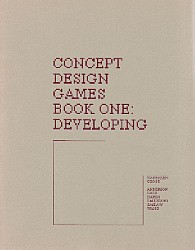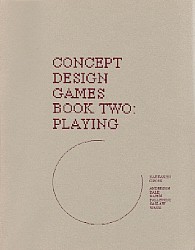|
 
____
Concept Design Games, A report submitted to the National Science Foundation.
Book One: Developing. Book Two: Playing.
Cambridge: MIT Department of Architecture, 1987. With Mark D. Gross, and James Anderson, Nabeel Hamdi, John Dale, Sergio Palleroni, Ellen Saslaw, Ming-Hung Wang.
__________________________________________________________________________________________ _________________
These games are not design simulations in which real life situations are played out.. The assumption of our project was that designing - the actual making of decisions about forms in space - had a strong and inevitable social dimension and as such was influenced by the way in which involved parties interacted. Starting from that assumption we thought of particular concepts that drive such interactions and tried to develop games that would highlight such concepts and would make the players aware of their dimensions.
As such, each game itself focusses on only a specific aspect of the wholistic experience of designing.
Hence the similarities we looked for had to do with the interaction between players, not the forms they produced. The games are played with objects - clothespins, nails, and other hardware - that have no reference to built environment at all. This had the additional advantage of making the games themselves easily set up.
My hope was that the games would be used by researchers wanting to learn more about the action of designing and its social and cognitive aspects. As such it has been used in the MIT design theory seminars by profs. Schön and Porter and others in the early nineties.
Book one of the report deals with the structure of this kind of games. It explains the nature of concept games and how they may be developed: a handbook for development of such games if you like.
The games presented in book two are intended as examples. First game rules are explained, followed by the report of a game played.
Concept design games represent theories about ( aspects of ) designing. By playing them, the theories are tested and most likely modified as a result. As such the games are research tools and those who study designing would gain most by developing their own games geared to their own purposes and theories. Indeed, although playing such games is a way of learning about designing, even more is learned by making a game oneself.
A typical example of this attempt is the so called 'silent game'.
****
; to bibliography overview...to short list.....to teaching list.....to design list.....to comprehensive list
|